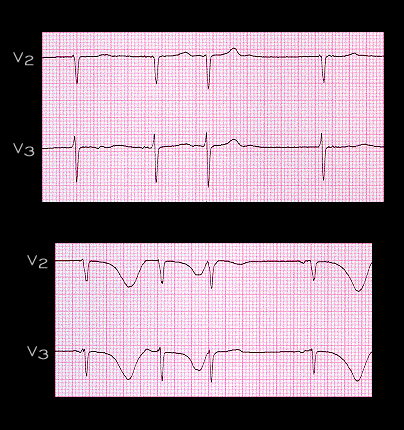
As mentioned earlier, QT prolongation and life threatening ventricular arrhythmias may also be caused by a wide variety of drugs, particularly the types Ia and type III antiarrhythmic drugs. They may also occur spontaneously, usually in association with bradycardia. These are examples of the acquired long QT syndromes. The ECGs shown here are from a 58 year old woman with long standing sinus node disease. She was not receiving any drugs and did not have an electrolyte abnormality. The upper strips of leads V2 and V3 are characteristic of her usual ECG. The lower strips were recorded in the emergency department following an episode of syncope. In both there is a slow irregular rhythm with low amplitude P waves that are difficult to identify. Note the marked QT prolongation and deeply inverted T waves that are present in the lower tracing. Shortly after the lower tracing was obtained, an episode of non-sustained polymorphic ventricular tachycardia was observed but not recorded.
